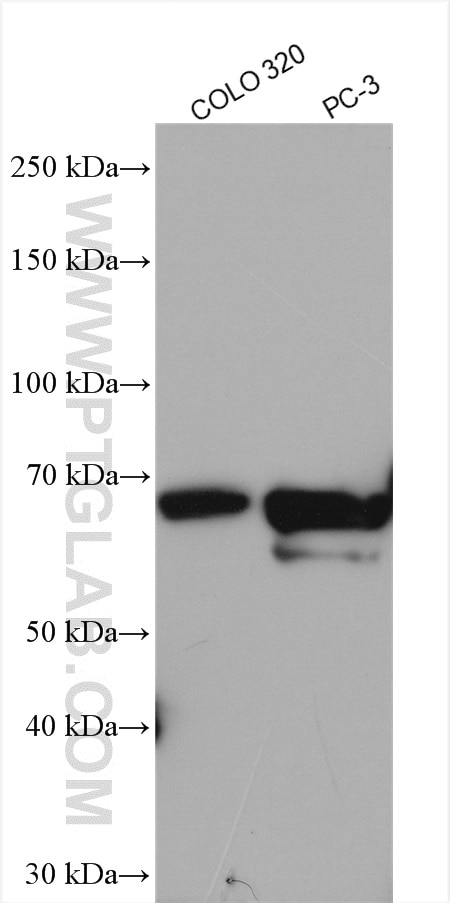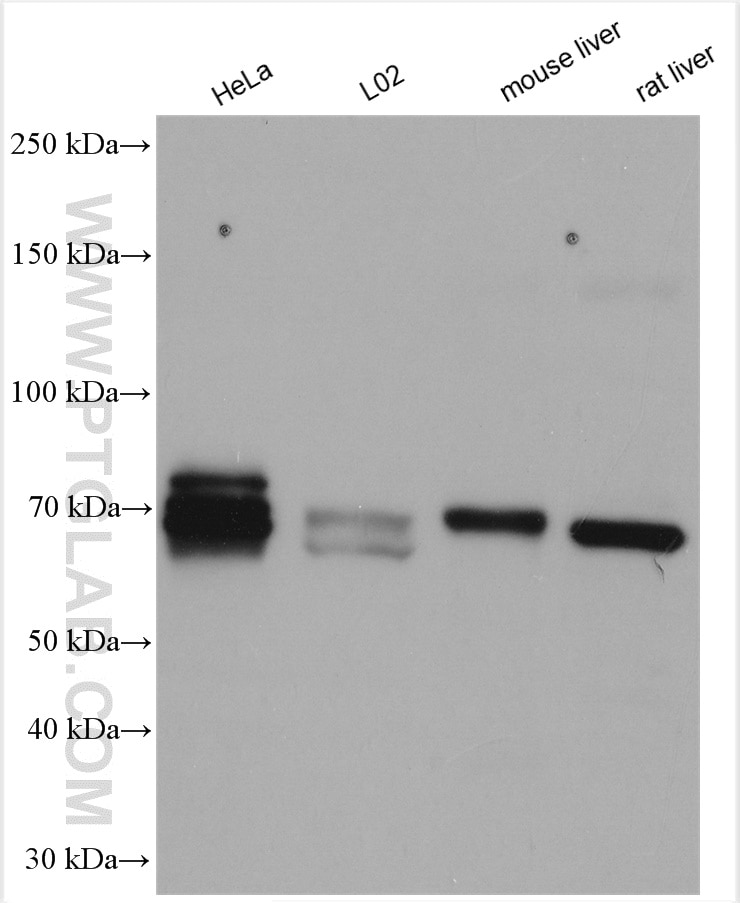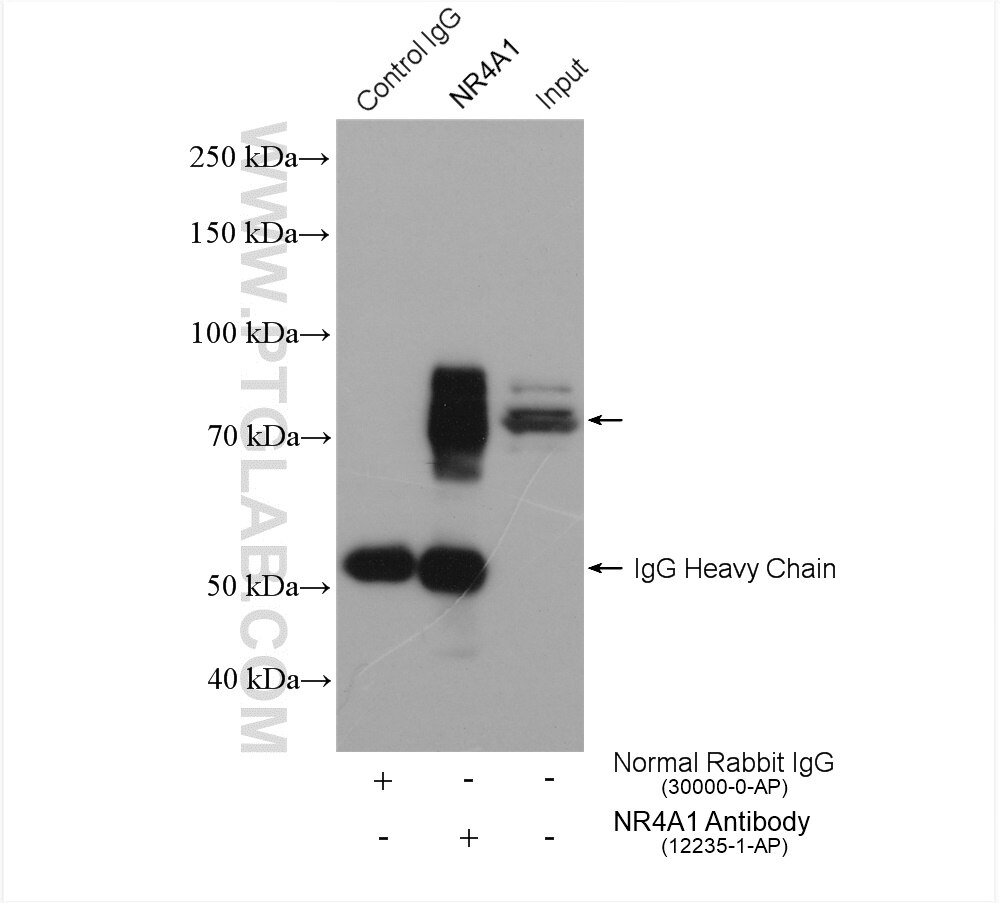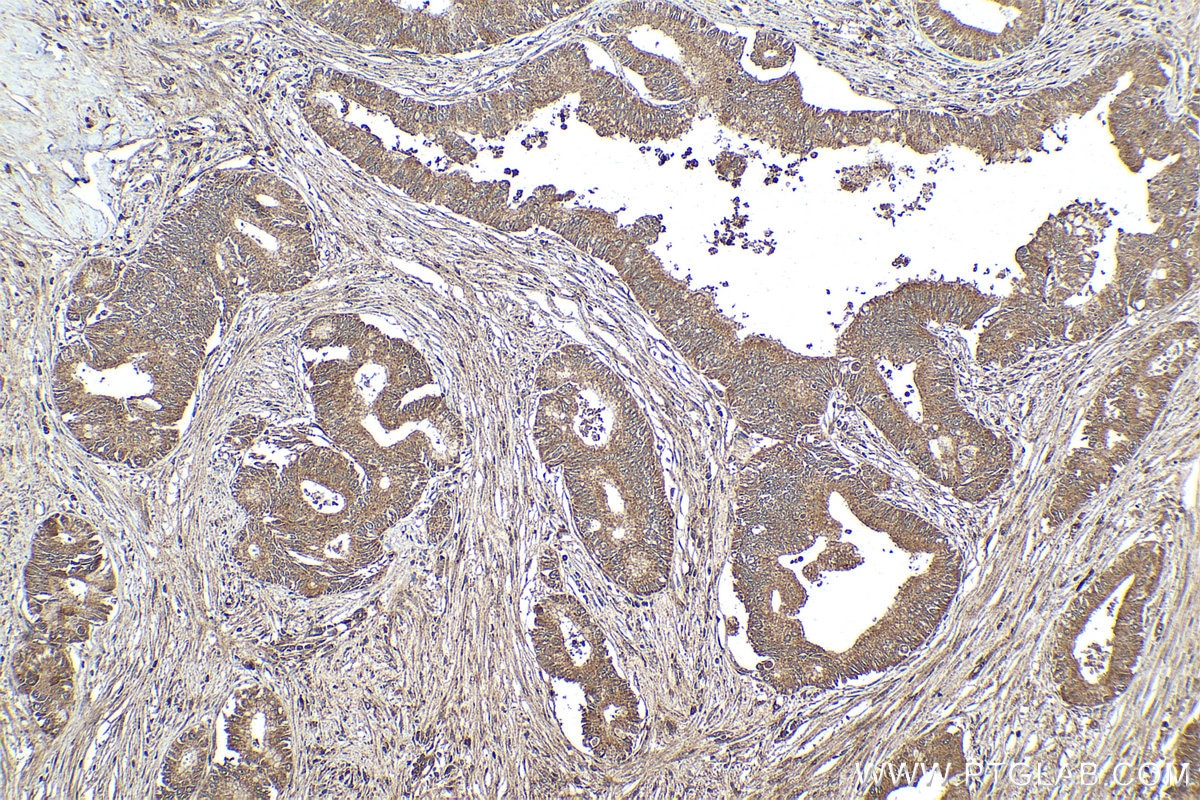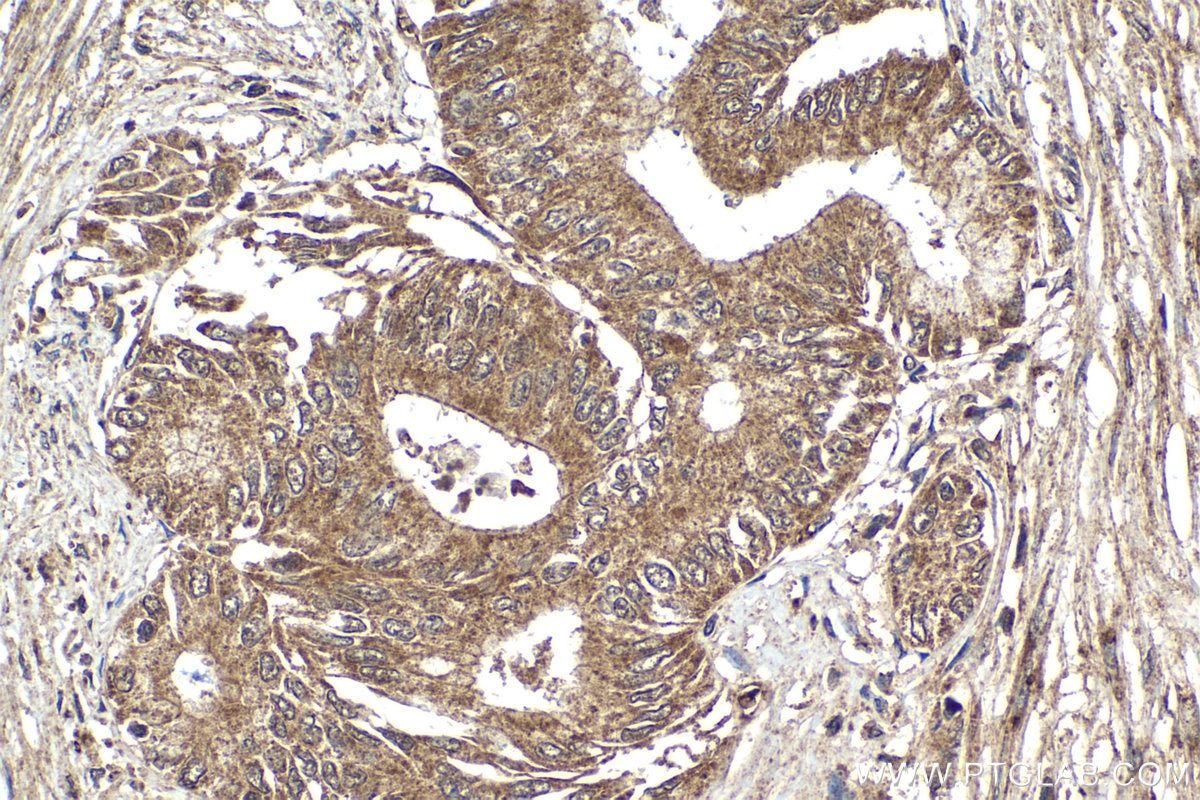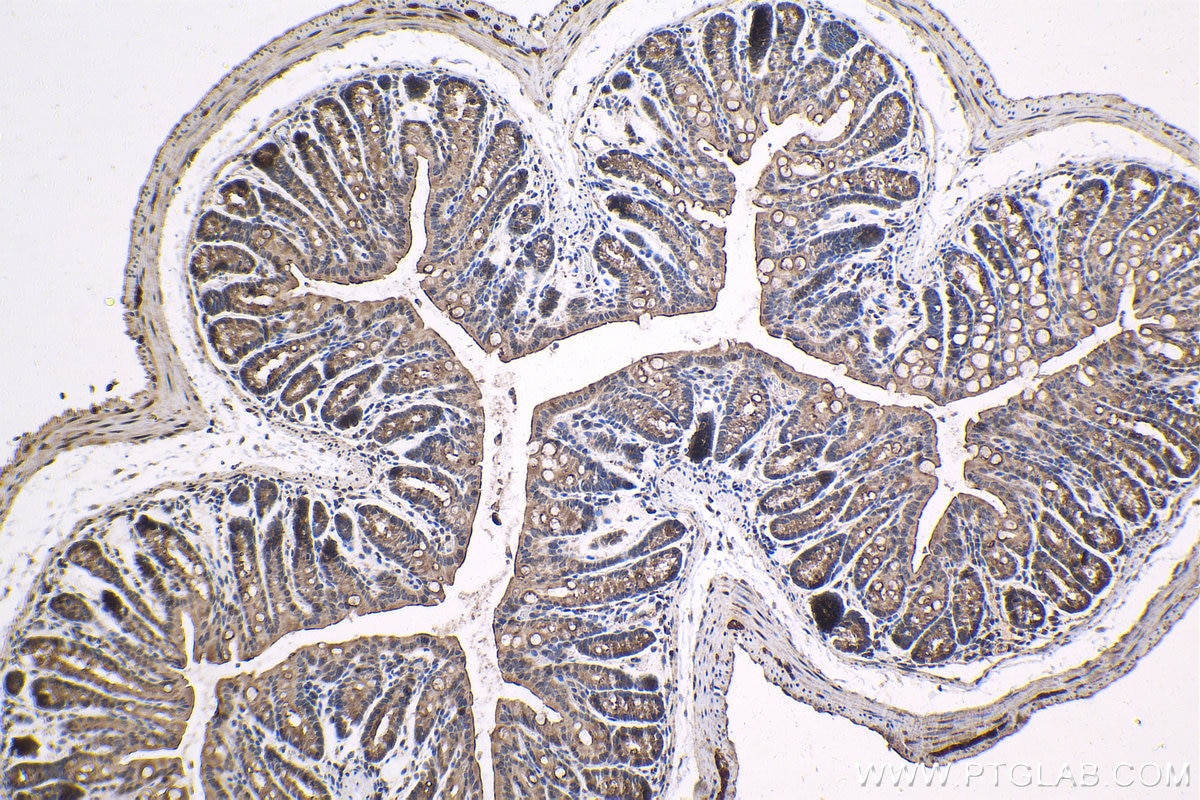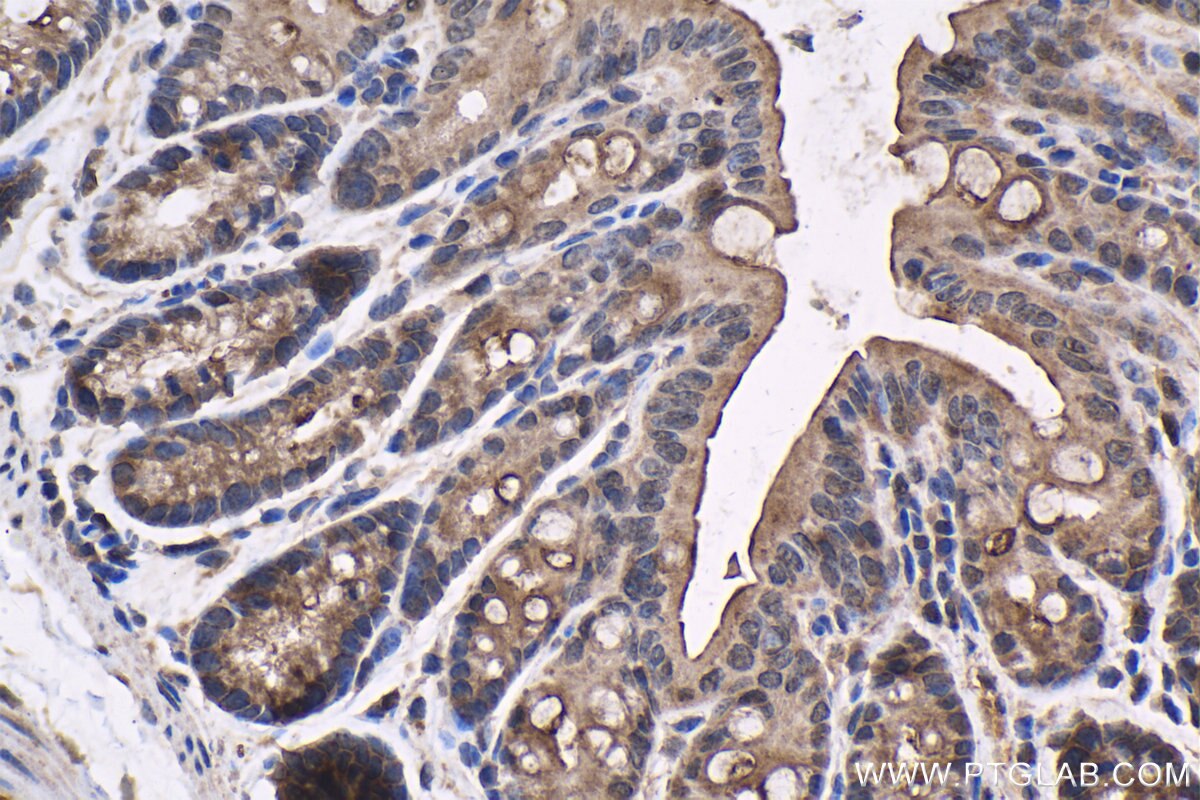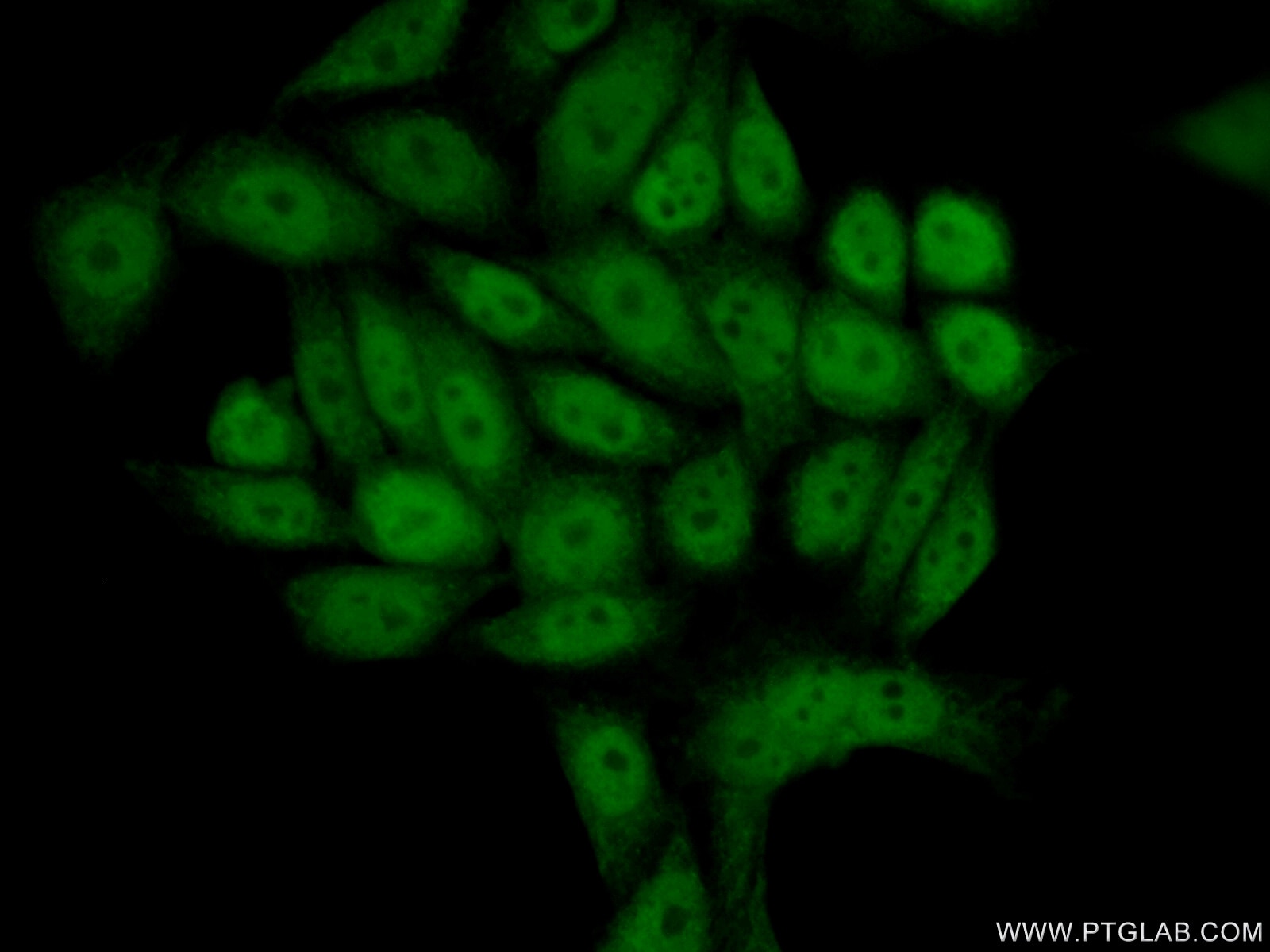- Phare
- Validé par KD/KO
Anticorps Polyclonal de lapin anti-NR4A1
NR4A1 Polyclonal Antibody for WB, IP, IF, IHC, ELISA
Hôte / Isotype
Lapin / IgG
Réactivité testée
Humain, rat, souris
Applications
WB, IHC, IF/ICC, IP, CoIP, ChIP, ELISA
Conjugaison
Non conjugué
N° de cat : 12235-1-AP
Synonymes
Galerie de données de validation
Applications testées
| Résultats positifs en WB | cellules HeLa, cellules COLO 320, cellules L02, cellules PC-3, tissu hépatique de rat, tissu hépatique de souris |
| Résultats positifs en IP | cellules HeLa, |
| Résultats positifs en IHC | tissu de côlon de souris, tissu de cancer du pancréas humain il est suggéré de démasquer l'antigène avec un tampon de TE buffer pH 9.0; (*) À défaut, 'le démasquage de l'antigène peut être 'effectué avec un tampon citrate pH 6,0. |
| Résultats positifs en IF/ICC | cellules PC-3, |
Dilution recommandée
| Application | Dilution |
|---|---|
| Western Blot (WB) | WB : 1:1000-1:4000 |
| Immunoprécipitation (IP) | IP : 0.5-4.0 ug for 1.0-3.0 mg of total protein lysate |
| Immunohistochimie (IHC) | IHC : 1:500-1:2000 |
| Immunofluorescence (IF)/ICC | IF/ICC : 1:50-1:500 |
| It is recommended that this reagent should be titrated in each testing system to obtain optimal results. | |
| Sample-dependent, check data in validation data gallery | |
Applications publiées
| KD/KO | See 7 publications below |
| WB | See 21 publications below |
| IHC | See 2 publications below |
| IF | See 9 publications below |
| ELISA | See 1 publications below |
| CoIP | See 1 publications below |
| ChIP | See 3 publications below |
Informations sur le produit
12235-1-AP cible NR4A1 dans les applications de WB, IHC, IF/ICC, IP, CoIP, ChIP, ELISA et montre une réactivité avec des échantillons Humain, rat, souris
| Réactivité | Humain, rat, souris |
| Réactivité citée | rat, Humain, souris |
| Hôte / Isotype | Lapin / IgG |
| Clonalité | Polyclonal |
| Type | Anticorps |
| Immunogène | NR4A1 Protéine recombinante Ag2875 |
| Nom complet | nuclear receptor subfamily 4, group A, member 1 |
| Masse moléculaire calculée | 598 aa, 64 kDa |
| Poids moléculaire observé | 64-70 kDa |
| Numéro d’acquisition GenBank | BC016147 |
| Symbole du gène | NR4A1 |
| Identification du gène (NCBI) | 3164 |
| Conjugaison | Non conjugué |
| Forme | Liquide |
| Méthode de purification | Purification par affinité contre l'antigène |
| Tampon de stockage | PBS avec azoture de sodium à 0,02 % et glycérol à 50 % pH 7,3 |
| Conditions de stockage | Stocker à -20°C. Stable pendant un an après l'expédition. L'aliquotage n'est pas nécessaire pour le stockage à -20oC Les 20ul contiennent 0,1% de BSA. |
Informations générales
NR4A1 is an orphan nuclear receptor that act concomitantly with NURR1 in regulating the expression of delay-early genes during liver regeneration. Also NR4A1 has linked not only to cell apoptosis but also proliferation in response to growth factor. It plays a role in caspase-independent cell death by activation of the ERK pathway and increased activity of MEF2 transcription factors. NR4A1 exists some isoforms with MW 65 and 34 kDa.
Protocole
| Product Specific Protocols | |
|---|---|
| WB protocol for NR4A1 antibody 12235-1-AP | Download protocol |
| IHC protocol for NR4A1 antibody 12235-1-AP | Download protocol |
| IF protocol for NR4A1 antibody 12235-1-AP | Download protocol |
| IP protocol for NR4A1 antibody 12235-1-AP | Download protocol |
| Standard Protocols | |
|---|---|
| Click here to view our Standard Protocols |
Publications
| Species | Application | Title |
|---|---|---|
Aging (Albany NY) A systematic dissection of human primary osteoblasts in vivo at single-cell resolution. | ||
Sci Rep Nur77 exacerbates PC12 cellular injury in vitro by aggravating mitochondrial impairment and endoplasmic reticulum stress.
| ||
Sci Rep NR4A1 Knockdown Suppresses Seizure Activity by Regulating Surface Expression of NR2B.
| ||
Mol Neurobiol Contra-directional Coupling of Nur77 and Nurr1 in Neurodegeneration: A Novel Mechanism for Memantine-Induced Anti-inflammation and Anti-mitochondrial Impairment. | ||
Bioorg Chem Structure-based design and synthesis of anti-fibrotic compounds derived from para-positioned 3,4,5-trisubstituted benzene | ||
